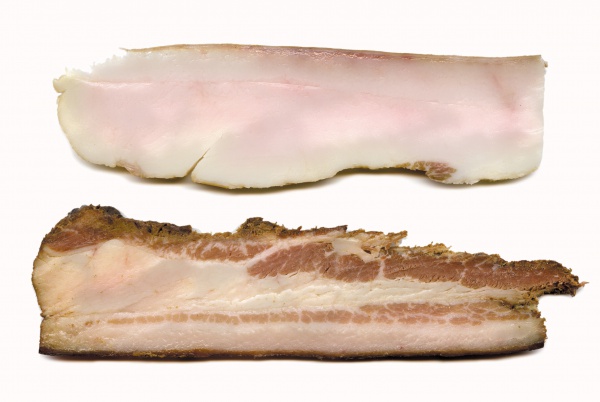Facts About Tyrolean Speck
Tyrolean Speck is a distinctive ham imbued with a unique juniper flavor, originating from the Tyrol region, which straddles both Austria and Italy. Renowned for its rich culinary heritage, it melds ancient techniques of salt-curing and smoking. Historical records of Tyrolean Speck date back to the early 13th century, and remarkably, the methods employed today have remained largely unchanged. It even holds the prestigious Protected Geographical Indication (PGI) status under the names Südtiroler Speck or Speck Alto Adige in Italian.
The production process of Tyrolean Speck begins with the hind leg of a pig, which is deboned before curing. The leg is divided into sections and then cured in a blend of salt and spices, including garlic, bay leaves, juniper berries, and nutmeg. Subsequently, the meat is left to rest for several weeks. The next step involves cold-smoking the ham with beech wood at controlled temperatures for about a week. Finally, the ham undergoes a five-month maturation period to develop its full flavor.
When it comes to serving, Tyrolean Speck is typically sliced thin and enjoyed with accompaniments such as horseradish, pickles, and dark rye bread. Its smoky, savory taste makes it a versatile ingredient that pairs well with a variety of dishes, from hearty breads to shellfish, pasta sauces, risottos, and salads. In Italy, it is commonly featured on pizzas or in pasta dishes, often paired with radicchio, showcasing the region’s culinary fusion. Thanks to its smoky flavor and extended curing process, Tyrolean Speck can also be used as a substitute for bacon or pancetta in various recipes.

 Switzerland
Switzerland